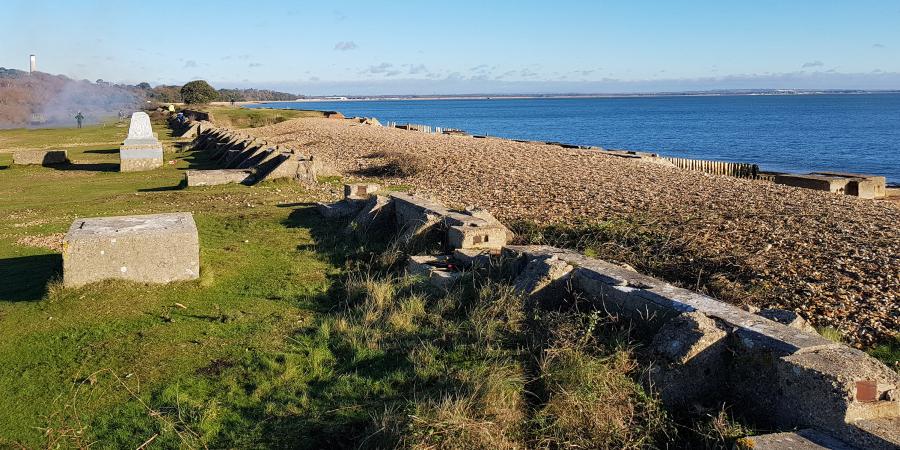In the 75th D-Day anniversary year, Wessex Archaeology was commissioned by the New Forest National Park Authority to create 3D reconstructions of the WWII remains at Lepe County Park. This work was part of the National Lottery Heritage Fund Landscape Partnerships Scheme titled “Our Past, Our Future”.
The New Forest was heavily used for storage and as a preparation area for the WWII D-Day landings. The Lepe site currently contains substantial visible remains of the D-day activities, such as structures for the construction and launching of large concrete caissons, which formed part of the Mulberry harbours used during the Allied invasion of Normandy. It also includes remains relating to the embarkation of men, vehicles and supplies, such as beach hardening mats, dolphins which relate to the pier head used for loading ships, and a water tower base.
These internationally-significant structures relating to the D-Day preparations are under threat due to coastal erosion and the ravages of time.



The project utilised existing data relating to the D-Day remains on the foreshore at Lepe to create digital and physical interpretations of the site, in both its current form and how it looked in 1944.
These interpretations will be used as a basis for a series of dissemination projects to fulfil the vision to ‘ensure the New Forest’s distinctive landscape survives through future change and modern-day pressures.’

Phase 1 of the project has included capturing and presenting the remains in virtual 3D, showing how they look on the site today. This phase of the project aimed to not only preserve the remains in 3D but make them more widely accessible and raise awareness of this fascinating and important site.
Phase 2 included the creation of a second 3D virtual model showing a comparable area to that in Phase 1 (around 600m of foreshore). This second model reconstructed how the site would have looked on a specific day in 1944 during the launching of the caissons, as preparations were made for embarkation to join the assault at Normandy. Both these models are interactive and include a trail with information points.
We also create a 3D print from this virtual model which will be put on display by the New Forest National Parks Authority and will be used as an Educational resource.
“This is a very significant project in this D-Day anniversary year. The site is under threat from the ravages of time and the sea. We have already lost around 45% of the Mulberry construction platforms and coastal erosion is now having a visible impact on the remaining structures. In a few more years, the beach’s D-Day remains could be lost forever.
“By creating virtual 3D models and 3D prints of the landscape, we will ensure that there is a detailed record of this hugely important site for visitors and ensure future generations continue to understand and take interest in WWII activity and its impact on the New Forest. It seemed only fitting that we commemorated the anniversary of D-Day in this way.”
James Brown, Community Archaeologist at the New Forest National Park Authority.
You can find out more information about the role the New Forest played in WWII and D Day on the New Forest Knowledge website.

